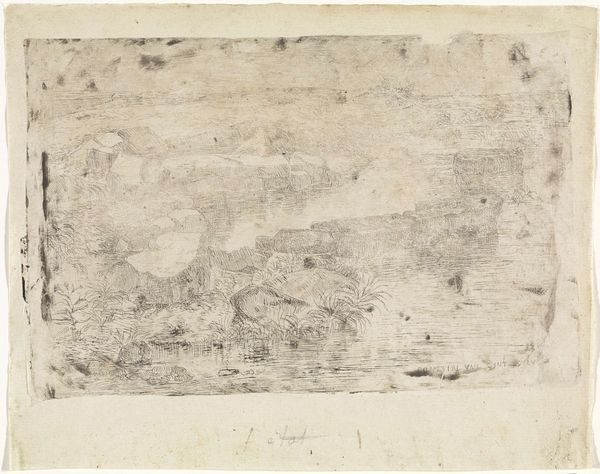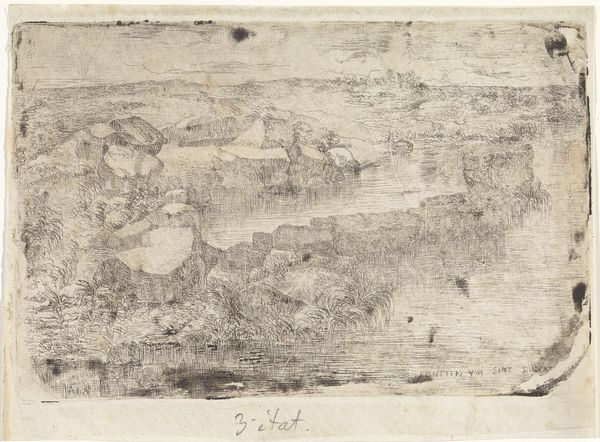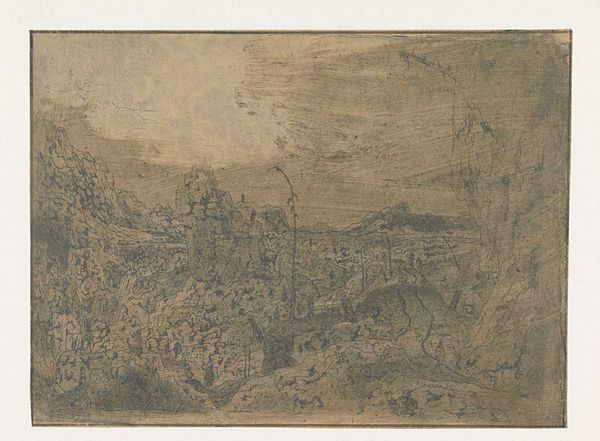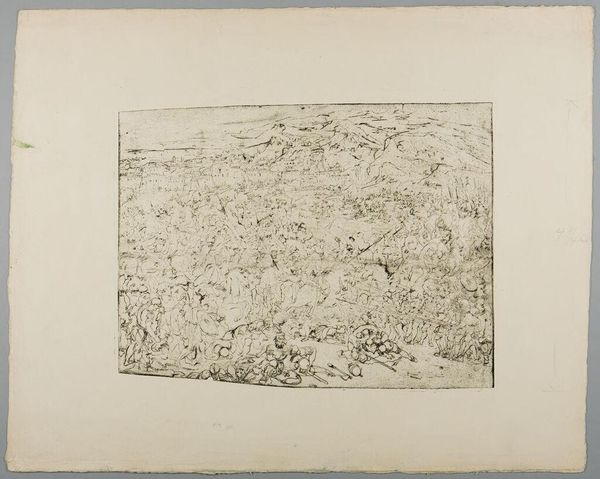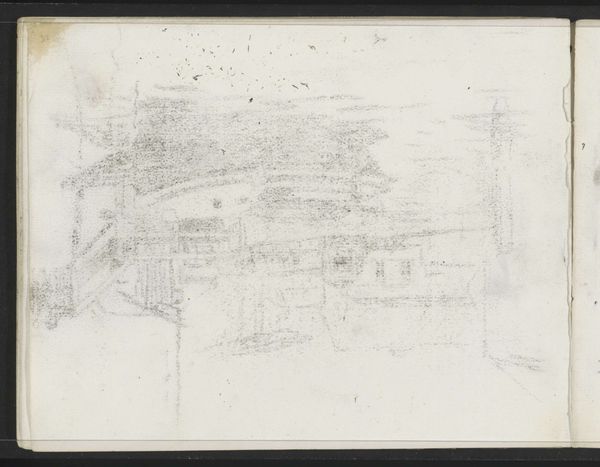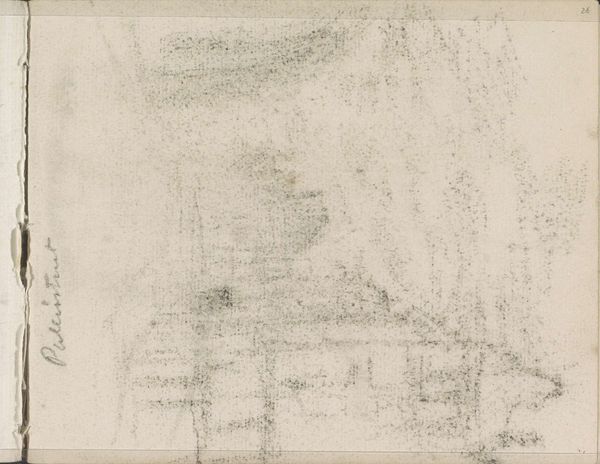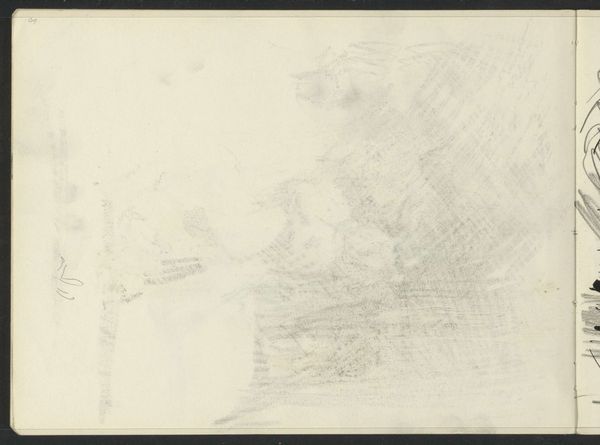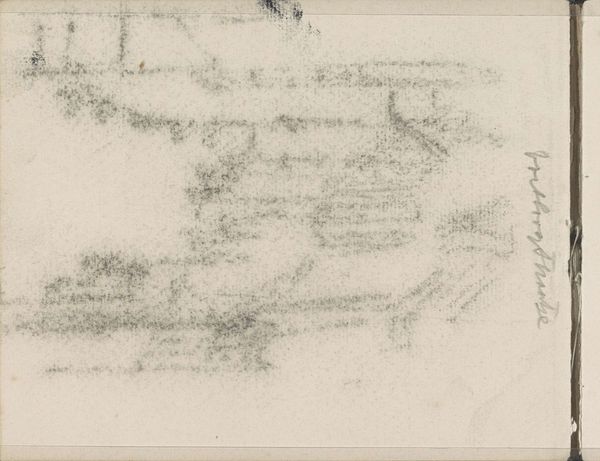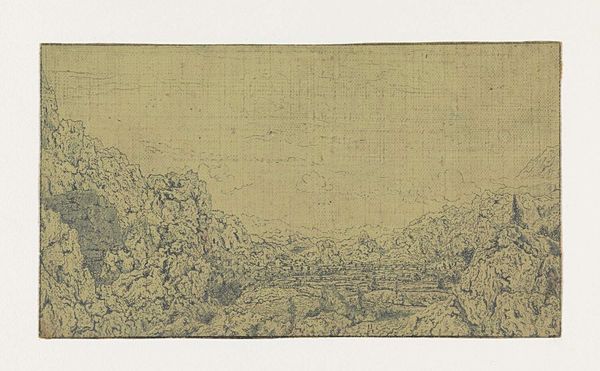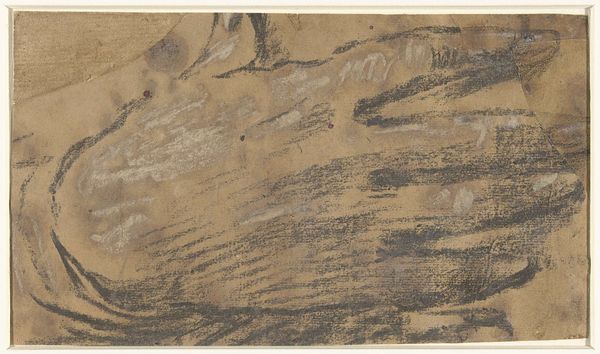
drawing, print, etching, paper, ink, pen
#
drawing
# print
#
etching
#
pencil sketch
#
landscape
#
etching
#
paper
#
ink
#
pen-ink sketch
#
pen
#
watercolor
Dimensions: height 131 mm, width 194 mm
Copyright: Rijks Museum: Open Domain
Curator: Up next, we have "Sint-Servaasbron, Maastricht," an etching, drawing, and print rendered with pen, ink, and paper by Alexander Schaepkens sometime between 1830 and 1899. What do you make of it? Editor: Immediately, I'm struck by how delicate and almost ephemeral it feels. The landscape, though rendered in ink, seems to fade into the mists, giving it a dreamlike quality. A real liminal space, like a border between worlds. Curator: Interesting. Water, of course, holds tremendous symbolic weight. You’ve got the "Sint-Servaasbron"— Saint Servatius Spring. Saint Servatius being a significant figure in Dutch history as one of the first bishops in the Netherlands. So a natural water source linked to a major religious figure. This intersection— tell me more about that symbolism! Editor: Right. Water, in its symbolic form, has appeared in nearly every religion, myth and sacred practice dating back as far as record-keeping exists! In countless tales and myths it has represented everything from purification, redemption, life itself! And here, contained by stone... the natural order defined and shaped by human intervention. It hints at layers of meaning, suggesting a connection to deeper, perhaps spiritual, foundations of the city of Maastricht. The spring becomes more than just a geographical location; it becomes a locus of memory, belief, and cultural identity. Curator: You know, there’s a sketchiness to Schaepkens' line work that lends itself well to this idea of memory. Things that are fading, half there. Etching captures that ghostliness perfectly, I think. A lot of old techniques do. Editor: Precisely. It speaks to a visual representation of remembrance. Etchings almost mimic memory itself – traces, faded impressions of events past. The fluidity, like watercolor – feels utterly intrinsic. Curator: There's an undeniably melancholic atmosphere. Schaepkens wasn’t just depicting a place; he was conjuring a feeling. And in my humble opinion, he captured that perfectly! Editor: Well said! A landscape of layered meanings, both geographically situated and symbolically resonant. It reminds us that every place holds echoes of its past, accessible to those who look – or perhaps feel – closely enough.
Comments
No comments
Be the first to comment and join the conversation on the ultimate creative platform.
